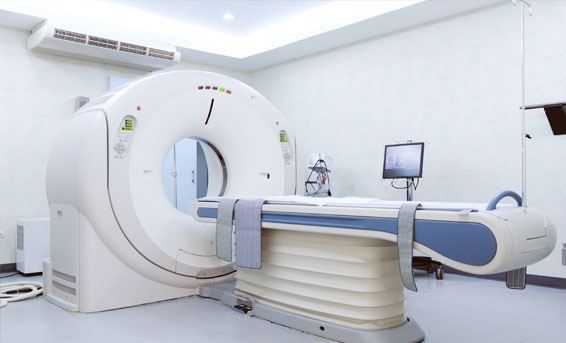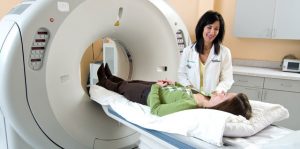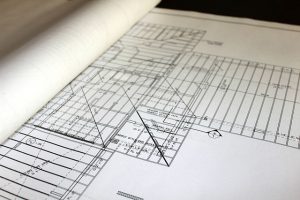If you’re considering starting a diagnostic imaging center yourself, you’ll want to first consider IF you should begin working toward opening an imaging center, HOW TO BEGIN your process for planning out this mammoth endeavor, and WHAT IT WILL TAKE in the end to get the center up and running and, most importantly, profitable.

So. How do you open a diagnostic center? There’s more to it than many people realize. The first step is determining whether you should consider opening a center of your own. The most valuable thing you can do at
See How Diagnostics Marketing Can Boost Your Revenue
The Total Cost Of Starting An Imaging Center
Everything starts with money. No matter where you stand on a variety of issues – political, religious, humanitarian – the first consideration for everything is money.

Healthcare is no different. The monetary cost of a diagnostics center can be described as ‘outrageous’ or ‘obscene’ without even drawing within sight of the concept of hyperbole. Understand that, at least for many people, whatever numbers you have in your head are likely not anywhere near what your final cost will be.
To determine your overall price tag, you’ll have to look at all of the specific costs to get started. It’s best to set up a price sheet with a minimum and maximum that you think you’ll encounter for each item so you have a clear range.
In this article we will focus on the initial items to get you going, but keep in mind ongoing costs like marketing, overhead, and maintenance. And don’t forget about the small items that add up like software costs, waiting room furniture, and staff meetings just to name a few.
What Type Of Diagnostics Are You Focused On?
The term ‘Diagnostic Center’ could mean a variety of things. There are two main groupings (which are not mutually exclusive):
1 – Clinical Pathology – These are labs that do things like bloodwork, urinalysis, and handle other bodily fluid testing, etc. There are very few efforts to start new businesses focusing on this element of diagnostics, as a handful of other companies have already managed to expand into national competition, and it’s cheap enough that many mid-sized primary physicians have labs onsite.
2 – Radiology or Medical Imaging Centers – This article will focus on Imaging Centers, as these tend to involve the more costly equipment. Imaging can involve a variety of modalities which produce images of the body, such as CT, MRIs, PET scans, and others. These centers are more
Where Is The Best Place To Start A Diagnostics Center?
The first rule of real estate and one of the major determining factors of the success of every business are the same: location, location, location!

This doesn’t just mean exactly where you are in a city, either. The first thing you should do, even before you begin looking for funding, is to determine what niche your business will fill. How many hospitals are there within ten miles? Twenty? What are the populations of the cities and towns in your area? Are there any other freestanding or independently owned diagnostics centers? Where are they located? What modalities do they offer?
Answer these questions, and you’ll be on your way to mapping out the beginnings of your overall plan. Later, you’ll need to determine an exact physical location. For now, you need to know where you want to look.
Location Should Be Considered In A Number Of Ways
It’s important to think beyond the city, or neighborhood to start your business. Make sure to think about the smaller things like whether the exact location is convenient as far as traffic patterns and accessibility from major roadways.
If your potential patients cannot find your building or would have to drive for longer than would be comfortable, then they’re going to become somebody else’s potential patients. Healthcare providers tend to cluster near hospitals and other healthcare providers for a few reasons:
- Specialist facilities like being near hospitals because it means that any referrals from the hospital are going to be able to reach their practice easily.
- Other providers use the rationalization that if they are within a few blocks of rival practices, then there is no discussion to be had about which provider has the more convenient location, which removes one criteria from consideration when trying to poach patients. Setting up shop in a different area comes with a risk of being inconvenient to your targeted patient-base.

For convenience, selecting a site close to major thoroughfares is most often preferable. Depending on which modalities and machines you utilize, though, you may not want to be sitting next to extremely busy roads. You’re already going to have to modify whatever building you decide to use.
Pro-tip: Don’t forget to take parking and public transit into account when selecting your building!
Is An Office Park A Good Location For A Diagnostics Imaging Center?
Diagnostics imaging utilizes powerful magnets, radioactive chemicals, and bursts of radiation. The equipment is loud and takes up a lot of space. Therefore, if at all possible, you want to set up your Imaging Center in a freestanding building, and not as part of a complex (whether something akin to a shopping center or a multi-story building makes no difference). If you do end up having to set up in a complex, you’ll need to take a few precautions to avoid upsetting the neighbors, which could mean slightly higher price tags during your initial renovations.
What Specifications Do Diagnostics Centers Need To Follow?
Diagnostics equipment has very particular requirements, so you will need to renovate any building you use, even if it used to be a diagnostics imaging center. These renovations will include meeting building codes or regulations regarding healthcare, imaging centers, and specific types of machines. MRIs, for example, require shielding. Other machines also have specific requirements for the construction or layout of the rooms they occupy, so make certain to be thorough in your research.

Pro-tip: Machine-specific requirements also mean that you need to have selected and purchased your machines before renovations begin in earnest. Timing will be crucial here, as you will want to try to coordinate delivery of your new or used MRI or CT Scanner with the progress of the renovations. Walls will likely need to be removed to get them into the building, so good timing can save you a few thousand dollars in the process.
How Much Does an MRI Machine Cost?
If you’re wondering how much an MRI machine costs, you’re most likely looking at between $150,000 and $500,000. However, there are options under $150,000 and buying a used or refurbished machine is often a big money saver. Alternatively, the most advanced models cost upwards of $1 million. Obviously, there is a huge range of prices based on the machine. Your MRI machine is a big decision and will be one of your biggest expenses when running an MRI center or multi-modality center.
MRI Shielding
That’s why it’s important to make sure your MRI room is up to standard.
You must have the proper MRI shielding to ensure that your MRI is working optimally. Without it, you will notice noise and artifacts in the images you take, which can result in unclear images, and unnecessary rescans.
The MRI is Bulky
You’ll want to make certain you have ample room for the machine, because it is huge. MRIs are comprised of three nested components that provide structural support, internal Radio Frequency shielding, and of course various other crucial components.
This is yet another reason to ensure you have ample space not only for the machine to reside and get in the building in the first place, but also for your staff and patients to be able to move around comfortably in the MRI room.
Do You Need a Metal Detector at Your MRI Center?
Certain items (metallic ones) have a tendency to be attracted by magnetic fields. This could spell disaster for a rather expensive machine and in some case the people who happen to be in the wrong place at the wrong time. Many facilities go so far as to include a foyer by the entrance of the MRI room, specifically to have a convenient place to keep a metal detector.
Whether or not you want to implement a metal detector is up to you, but it is important to make this decision as early on as possible to incorporate it into your plans, or create procedures to otherwise avoid metal from being brought into the wrong areas.
Pro-tip: You’ll want to keep your MRI in an interior room or as far from moving traffic as you can get it. Well designed shielding helps, but vehicular traffic can interfere with the images because of the metal in the cars.
Design Your Building Layout With The Noise Of The Mri In Mind
Yes, it’s noisy. If you are in a complex of some sort, with neighbors, you’re going to want to consider taking a few measures to soundproof the room, or at least cut down on the noise. You’ll also want to consider what rooms are adjacent to the MRI room internally so that no sound-sensitive areas end up nearby.
CT Scan and X-Ray Room Requirements
Rooms containing CT Scanners and X-rays will also require specific shielding, except the shielding is meant to protect the people outside the room. Lead-lining the room will prevent any excess radiation leakage. This process is expensive, but necessary.
Some machines may also utilize various chemicals, which you will need to store before use and dispose of after. Again, this means that you need to decide which machines you plan to utilize before finalizing your renovation plans. Newer machines will generally require fewer special considerations and be less “hazardous”, but be thorough in your research so that you know exactly what each machine needs and what impact this will have on your construction and design plans.
Building an Imaging Center Requires Knowledge, Experience, and Expertise

In other words, consult with specialists who have done this before. Cutting corners may reduce your upfront cost to start, but the cost will be greater down the line, and may even impact your profitability, especially considering the intricate and layered considerations for the requirements of the machines, the layout of the center, patient expectations, and more. So, for the layout, especially, you will want to consult with a professional who has experience specifically with setting up and starting new imaging centers. The needs of the MRI room, by itself, make this worth the cost of seeking out somebody with a more established portfolio.
An expert should also be capable of helping you to decide the best layout, from the locations of the entrance and waiting rooms, all the way down to the width of the hallways and the best locations for restrooms.
Imaging Center Building Approval Process
Once your plans are finished and you’re ready to break ground, it’s time to hit the brakes. And put it in park.
Your plans need approval. First, you’ll need to show the final plans to your stakeholders. They’ve given you the money, so you have to show them what you’re doing with it. Then, Local, State, and possibly even Federal agencies will need to sign off on the plans.
The Code-checkers from your city or your county will go over the design with a fine-toothed comb. Even with the help of a qualified consultant, there will likely be things that you missed. Some obscure regulation, or a safety regulation that seems unimportant in the midst of design (but can actually be critical), will be brought to your attention, and you’ll have to make a few changes.
So, how many exits are there? Where are they? Where are you placing fire extinguishers? Did you remember to plan out the sprinkler system? No? How are you going to work that into the MRI room?
But you will also have to educate the authorities on the requirements of your machines. You will need to explain the whys and wherefores. It will be difficult, and it might be frustrating. Just remember, they’re just doing their jobs and trying to ensure the safety of your patients, and your plans will be improved by this approval process.
Time to Build!
Now, it’s time to break ground! But you’ll need somebody to oversee the project. You have two options for this.
Contractor vs Foreman

This comes down to whether you want to hire a contractor or not. If you want to try and save a little money, you can act as your own contractor, but you still need an expert on site. So if you choose not to hire a contractor, then you need to hire a foreman. You need somebody who knows construction and can coordinate the efforts of the workers on site. A good foreman can save you a lot of money and keep your renovations on time and on budget.
There are a few things to keep in mind, either way:
- This is an expensive process, and you’re already paying a lot, but mistakes will cost you more. For this reason, you need to visit the site every day. You will personally want to oversee as much as you can.
- You’re paying a lot for workers who know how to build – let them build. You and your contractor or foreman should know the design and the sticking points, and other than that, your concern should be in ensuring that no corners are cut. There are instances where you can be too hands-on.
- Set a timeline and work to maintain it. Be conservative in your initial estimates. It’s easier to take a day off if you get ahead than it is to catch up if you fall behind. And, this cannot be stressed enough since you want to time the work that’s being done with the delivery of your machines.
Finding the Right Staff for a New Diagnostics Center
As expensive and crucial as your machines are, your staff is even more important. Your staff drives your success. They’re the face of your imaging center. They’re the expertise that makes the entire place run. With this hard fact in mind, you need to begin looking for hires while the building is still being built or renovated. The hiring process, as you know, takes time. And even once you’ve spent a month or two selecting the best candidates, they will still, typically, need two to four weeks before they can actually join your team onsite. Some will need to move, some will already have jobs. Ant then there’s training and formalities. Give yourself ample time. Use job boards, career fairs, and any other resources you can to get the word out.
Pro-tip: If you’re on a budget, look for recent grads with high potential for growth. If you’ve got a lot of money for staffing look for more experienced technicians and radiologists. If possible, hire an experienced Chief Radiologist who can help with the hiring of his or her subordinates.
The Cost To Build A Website For A Diagnostics Center

Websites don’t just happen. They take time and money. And while you can make the attempt to go ‘old-school’ and do without a site for a bit, the habits of consumers and patients in the modern market involve heavy utilization of electronic information. That means a website is going to be a crucial item and not having one spells almost certain doom.
In order to give yourself the best chance of success, you’ll want to try to have a website designed, built, and launched by the time of your first day in operation.
What does it cost to build a diagnostic center’s website? A custom site, on average, typically starts at around $10k, and is usually over 50 pages in size. In some cases this can be trimmed, depending on how detailed you want the site to be, how many locations you have, and how many features, such as online billpay, that you plan to implement.
You will want to begin by doing research on your options and getting quotes from web development companies that specialize in outpatient care centers. Some agencies offer pre-planned websites that are built just for imaging centers with customization options. Templated sites like these can save you a ton of money and get you a robust and professional website for around $2,000. Figure out what you need, what you want, and what you’re willing to pay for.
Running an Imaging Center and Maintaining Profitability
Since you’re looking to start an imaging center, you likely already know a little bit about managing people or operations or both. But even with this experience, you may be surprised by just how much time, attention, and effort running a new business takes. As the owner, you will need to personally keep an eye on the finances and be prepared to make difficult decisions to ensure long-term profitability – sometimes this might mean taking a short-term hit as you reinvest or refocus your existing profits. There will be times when costs must be cut, and these circumstances will require creativity and patience to navigate successfully.
Profitability Begins And Ends With Patient Satisfaction

If you have no patients coming through the door, then you have no profit. Patients are the lifeblood of any medical business. Always keep patient satisfaction front and center. In order to breed happiness, you must know what your patients think, what their experience is truly like. Most healthcare providers overestimate their quality of service. Patients who seem like they are content or even neutral visits are not always so. From the very start, you should have a plan for gathering patient feedback, learning how you can improve, and guiding your happy patients to Google or wherever else to leave positive reviews. These efforts will draw new patients and build a towering reputation for your facility that will keep your profits stable or climbing.
After You Start An Imaging Center, You Need To Market It
Once your new diagnostics center is up and running, the hard part begins. You have a new, beautiful and inviting facility with state-of-the-art equipment and a great staff. Your next big undertaking is marketing. But it doesn’t have to be a guessing game and it doesn’t need to cost you an arm and a leg either. Digital marketing covers a wide range of services and offers a lot of valuable opportunities in diagnostics. If you’re on a tight budget, take a look at the options and make a priority order. Some of the most effective marketing strategies for radiology centers include:
- Email Marketing
- Social Media Marketing
- Pay Per Click Advertising
- Content Marketing (Blog Articles)
- Search Engine Optimization (Seo)
- Reputation Management (Online Reviews)
Once you have decided where and how to start your imaging center, you will need to set up a business strategy. You will need to study organizational and financial models, think outside the box, and prove to be an effective manager in order to make it all work. Even if your ultimate plan is to sell the business and move on, you still need to work for several years in order to make it an attractive purchase for an area hospital. It won’t happen quickly or easily. But with patience and hard work, this place than you’ve built can become a pillar of your community’s healthcare landscape and a cornerstone of your personal legacy.
